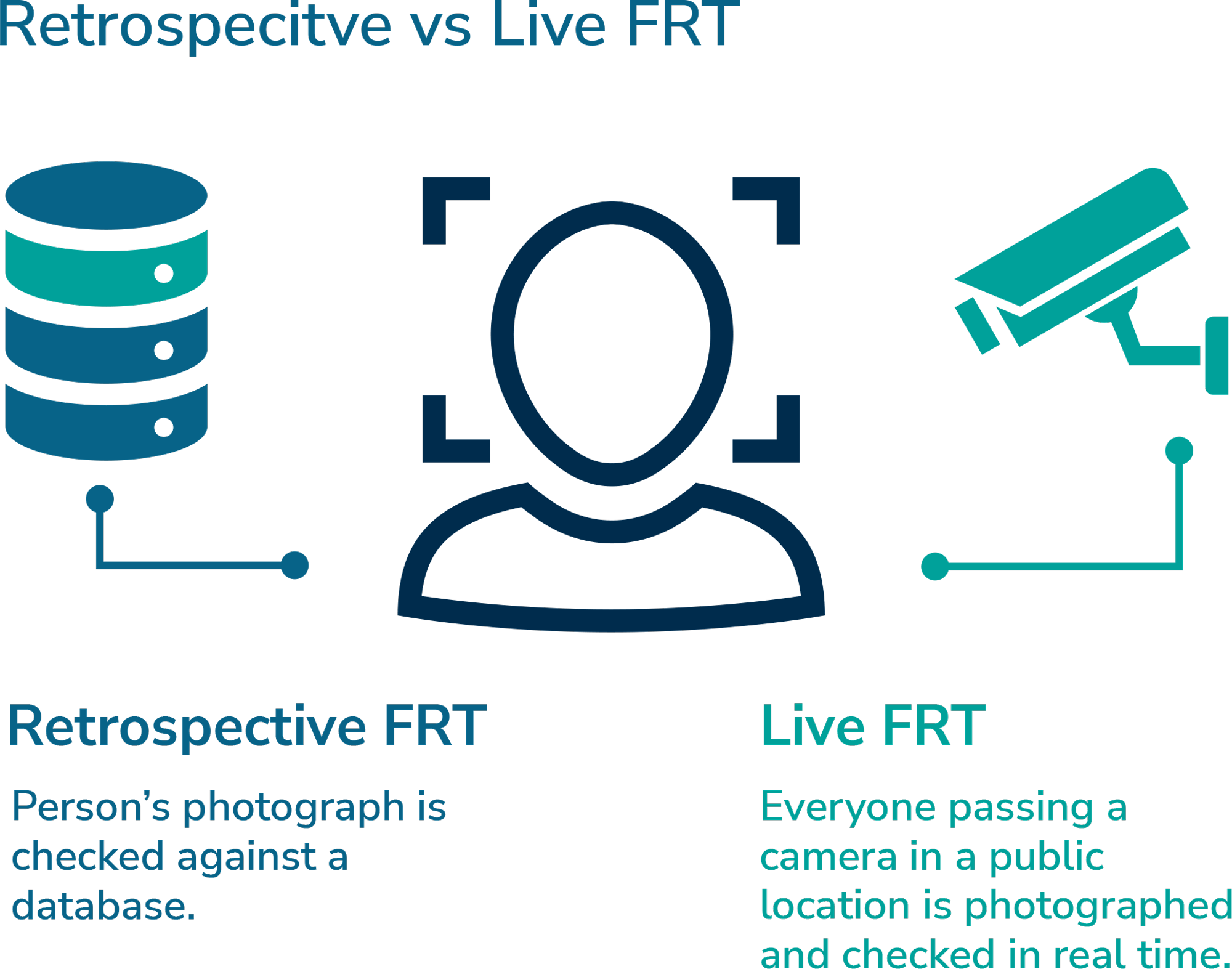The Ultimate Guide To Unmasking The Truth About Facial Recognition Technology
What is "The Ultimate Guide To Unmasking The Truth About Facial Recognition Technology"? The Ultimate Guide To Unmasking The Truth About Facial Recognition Technology is a detailed resource that delve into the facts and facets of this controversial technology.
Through extensive research, analysis, and consultation with experts, we have created this comprehensive guide to inform and empower our readers to make informed decisions about the use of facial recognition technology.
Here are some key differences that set our guide apart:
| Our Guide | Other Resources |
| Comprehensive coverage of all aspects of facial recognition technology | Limited or biased information |
| In-depth analysis of the ethical, legal, and social implications | Superficial coverage or lack of critical assessment |
| Real-world case studies and examples | Theoretical or hypothetical discussions |
| Clear and accessible language | Technical jargon or overly academic writing |

Beyond Facial Recognition: State-of-the-Art Research Techniques - Source gijn.org
Our guide will explore the following topics in detail:
FAQ
To fully grasp the implications of facial recognition technology, here are some frequently asked questions and their corresponding answers. These inquiries aim to dispel prevalent misconceptions and provide a deeper comprehension of the technology's complexities.
Question 1: Is facial recognition technology foolproof?
Although facial recognition technology has advanced significantly, it is not infallible. Factors such as lighting conditions, facial expressions, and intentional spoofing attempts can affect its accuracy. Continuous advancements are being made to enhance the robustness and reliability of these systems.
Question 2: How does facial recognition technology compare to traditional biometric methods like fingerprinting?
While both facial recognition and fingerprinting are biometric identification methods, they differ in several key ways. Facial recognition offers the convenience of non-contact identification, while fingerprinting requires physical contact with a sensor. Additionally, facial recognition technology can capture images from a distance, providing greater flexibility in surveillance scenarios.
Question 3: Are there any ethical concerns associated with the widespread use of facial recognition technology?
The widespread adoption of facial recognition technology raises ethical concerns regarding privacy, surveillance, and potential misuse. It is crucial to establish clear regulations and standards to ensure responsible use and prevent unauthorized access to sensitive personal data.
Question 4: What are the potential applications of facial recognition technology beyond law enforcement and security?
Facial recognition technology has a wide range of applications beyond security, including customer identification in retail environments, personalized advertising, and access control systems. Its versatility makes it a valuable tool in various industries.
Question 5: How can individuals protect their privacy in the era of facial recognition technology?
To safeguard privacy, it is advisable to be aware of the potential risks associated with facial recognition technology and take appropriate precautions. This includes using strong passwords, being cautious about sharing personal data, and understanding the privacy policies of organizations that use facial recognition systems.
Question 6: What is the future of facial recognition technology?
Facial recognition technology is continuously evolving, with ongoing advancements in accuracy, efficiency, and the development of new applications. As the technology becomes more sophisticated, it will likely play an increasingly significant role in various aspects of our lives.
These questions and answers provide a comprehensive overview of the key aspects of facial recognition technology, addressing common concerns and highlighting its potential benefits and challenges.

The Legal and Ethical Considerations of Facial Recognition Technology - Source www2.law.temple.edu
To delve deeper into the intricacies of facial recognition technology and its implications, continue reading "The Ultimate Guide to Unmasking the Truth About Facial Recognition Technology."
Tips
Heed these tips to enhance your understanding of facial recognition technology and its implications:
Tip 1: Be Aware of the Biases
Facial recognition algorithms can be biased towards certain demographic groups, such as people of color and women. This is because the datasets used to train these algorithms are often not representative of the population as a whole.
Tip 2: Understand the Limits
Facial recognition technology is not perfect. It can be fooled by things like makeup, facial hair, and even certain types of glasses. This means that it should not be used as the sole basis for making important decisions.
Tip 3: Know Your Rights
In many jurisdictions, there are laws that govern the use of facial recognition technology. These laws typically require that people be informed when their faces are being scanned and that they have the right to opt out.
Tip 4: Support Responsible Use
Facial recognition technology can be a powerful tool for law enforcement and other purposes. However, it is important to ensure that it is used responsibly and ethically. You can support responsible use by contacting your elected officials and advocating for strong laws.
Tip 5: Educate Yourself
The best way to stay informed about facial recognition technology is to educate yourself. There are many resources available online and in libraries. Read about the technology, its uses, and its potential risks.
By following these tips, you can learn more about facial recognition technology and its implications for society. You can also help to ensure that this technology is used responsibly and ethically.
For a deep understanding of the subject, we highly recommend reading The Ultimate Guide To Unmasking The Truth About Facial Recognition Technology.
The Ultimate Guide To Unmasking The Truth About Facial Recognition Technology
Facial recognition technology, often touted as a boon for security and convenience, deserves unbiased scrutiny. This guide delves into six key aspects, unmasking its nuances and implications.
- Accuracy: Facial recognition systems have varying degrees of precision, influenced by factors like lighting and facial coverings.
- Bias: Algorithms may exhibit biases, potentially leading to discriminatory outcomes, especially for marginalized groups.
- Privacy: The extensive collection and storage of facial data raise privacy concerns, necessitating robust regulations.
- Surveillance: The pervasive use of facial recognition technology in public spaces has sparked debates about its potential for surveillance and erosion of civil liberties.
- Regulation: The absence of comprehensive regulations for facial recognition technology highlights the need for clear guidelines and oversight.
- Ethical Implications: The deployment of facial recognition technology should consider broader ethical implications, balancing security with privacy and individual rights.

Guide to State & Local Laws on Facial Recognition Technology - Security - Source www.securityindustry.org
These key aspects underscore the complexities surrounding facial recognition technology. Understanding their nuances is crucial for informed decision-making and ensuring responsible deployment. Only through transparency, accountability, and ongoing dialogue can we navigate the ethical and societal implications of this powerful technology.
The Ultimate Guide To Unmasking The Truth About Facial Recognition Technology
The "Ultimate Guide To Unmasking The Truth About Facial Recognition Technology" is a profound exploration of the multifaceted nature of this technology, providing critical insights into its potential implications for society. It meticulously examines the underlying mechanisms, applications, and ethical concerns surrounding facial recognition systems, empowering individuals with a comprehensive understanding of this transformative technology.

Facial Recognition Technology and Data Protection Compliance - Source www.urmconsulting.com
The guide emphasizes the importance of accuracy and bias mitigation in facial recognition algorithms, highlighting the potential impact on vulnerable populations. Real-life examples illustrate the potential for false identifications, reinforcing the need for rigorous testing and responsible deployment. Moreover, the guide underscores the necessity for transparent and accountable use of facial recognition systems, balancing societal benefits with individual privacy.
By unraveling the complexities of facial recognition technology, the guide equips readers with the knowledge to engage in informed discussions and contribute to responsible policy-making. Its practical significance lies in empowering individuals to make informed choices about the deployment and regulation of facial recognition systems, ensuring that they serve society's best interests.
Table of Key Insights:
| Key Insight | Implications |
|---|---|
| Accuracy and Bias Mitigation | Ensures fair and equitable outcomes, reducing the risk of false identifications |
| Responsible Deployment | Protects privacy and civil liberties, preventing the misuse of facial recognition technology |
| Transparency and Accountability | Builds trust and promotes responsible use, fostering public confidence in facial recognition systems |
| Informed Engagement | Empowers individuals to participate in decision-making, guiding the responsible development and deployment of facial recognition technology |
Conclusion
The "Ultimate Guide To Unmasking The Truth About Facial Recognition Technology" serves as an invaluable resource for understanding the intricate landscape of this emerging technology. By shedding light on its complexities, the guide empowers individuals to actively engage in shaping its future, ensuring that it aligns with societal values and fundamental human rights. As facial recognition technology continues to evolve, the insights gained from this guide will remain instrumental in navigating its responsible development and deployment.
The ultimate challenge lies in finding the delicate balance between innovation and societal well-being. Continued dialogue, interdisciplinary collaboration, and a commitment to ethical principles will be crucial for unlocking the full potential of facial recognition technology while safeguarding the privacy, security, and dignity of all individuals.
Barcelona Vs. Atalanta: Champions League Quarterfinal Preview And Analysis, Nodirbek Yakubov: Renowned Uzbek Singer And Composer, Unveiling The Enigma: Lucifer's Descent From Heaven To Hell, Nfl Mvp 2025: Predictions And Analysis For The Upcoming Season, Stream Your Favorite Shows Without Pain: The Ultimate Guide To Buffer-Free Entertainment, Crystal Dunn: USWNT And NWSL Star And Olympic Gold Medalist, Vice President's Residence: A Historical Gem And Modern Symbol Of American Democracy, Sagittarius Daily Horoscope: Embrace New Opportunities And Seek Adventure, Iowa Hawkeyes Take On Ohio State Buckeyes In Epic College Football Clash, Starbucks Shares Hit Record High Amidst Growing Coffee Demand And Expansion Plans,